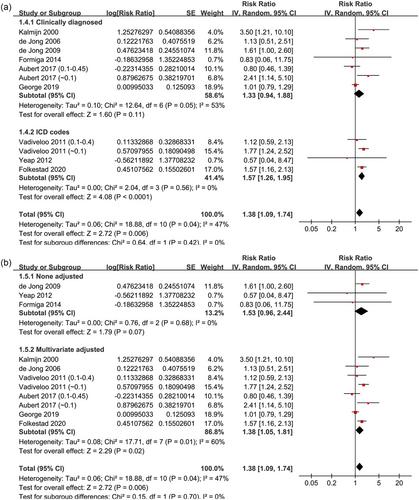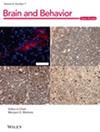Subclinical hyperthyroidism and the risk of dementia: A meta-analysis
Abstract
Background
Accumulating evidence suggests that thyroid dysfunction may be related to the risk of dementia. However, previous studies evaluating the association between subclinical hyperthyroidism and the risk of dementia showed inconsistent results. This systematic review and meta-analysis were performed to evaluate the relationship between subclinical hyperthyroidism and the incidence of dementia in the general population.
Methods
Cohort studies relevant were retrieved by searching the electronic databases including PubMed, Web of Science, and Embase. A random-effects model was used to combine the data by incorporating the influence of between-study heterogeneity. Subgroup and meta-regression analyses were performed to investigate the source of heterogeneity.
Results
Nine cohort studies including 49,218 community-derived participants were included. Among them, 3177 (6.5%) had subclinical hyperthyroidism at baseline. During a mean follow-up of 10.2 years, 4044 participants developed dementia. The pooled results showed that compared to the participants with euthyroidism, those with subclinical hyperthyroidism had a higher incidence of dementia (risk ratio: 1.38, 95% confidence interval: 1.09 to 1.74, p = .006; I2 = 47%). Subgroup analyses according to study design, age of the participants, methods for diagnosis of dementia, or analytic model did not significantly change the results. The univariate meta-regression showed that the cutoff of thyroid-stimulating hormone for defining subclinical hyperthyroidism negatively affected the association between subclinical hyperthyroidism and dementia (coefficient: –1.44, p = .009), which completely explained the heterogeneity (residual I2 = 0%).
Conclusion
Subjects with subclinical hyperthyroidism may have a higher risk of dementia compared to those with euthyroidism.



 求助内容:
求助内容: 应助结果提醒方式:
应助结果提醒方式:


